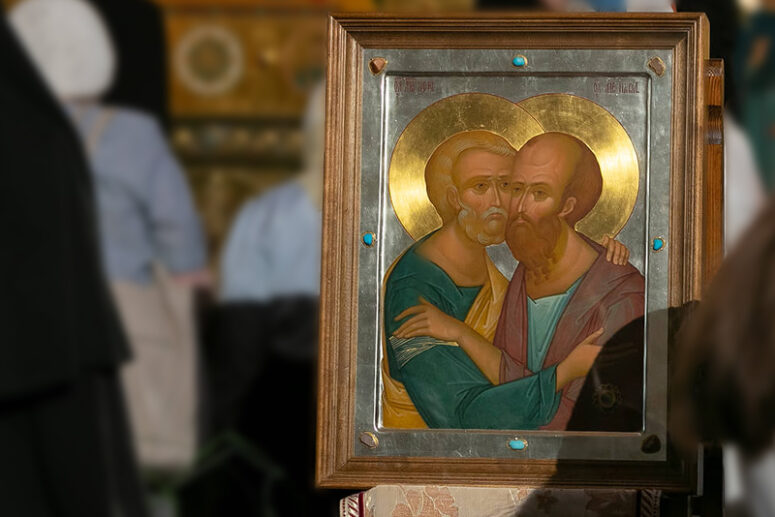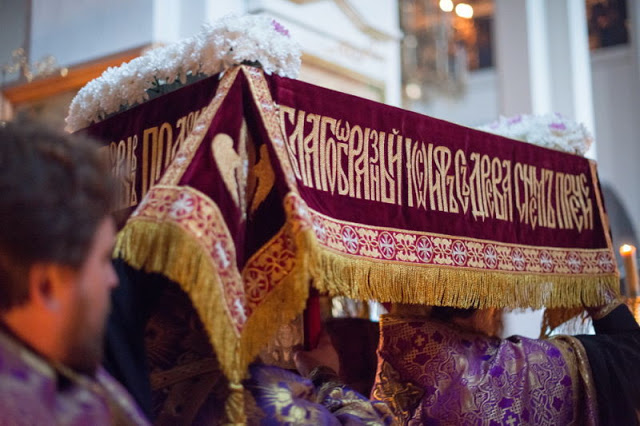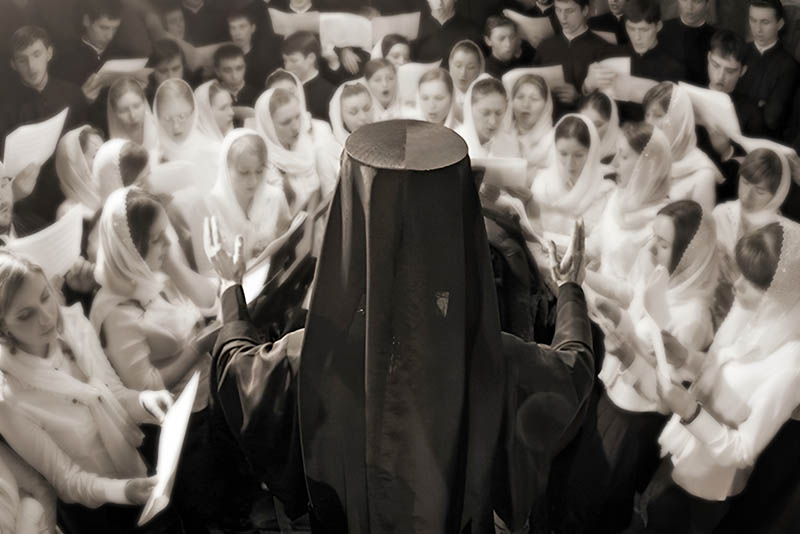
Saint Peter’s Fast, or the Apostles’ fast, is one of the four great fasts of the Church. It is the only fast that varies in duration depending on the date of Easter. It lasts from 8 to 42 days. An earlier Easter means a longer fast, and a later Easter a shorter fast.
The Apostles’ Fast starts on the Monday following the Sunday of All Saints, commemorated three weeks after Easter. The date is variable. The fast ends on 29 June (12 June, Old Style), on the day of the Apostles Peter and Paul.
Church ritology (the study of church rites and feasts) distinguishes at least two stages in the history of the Apostles’ fast, distinct in historical and ritualistic content. This post-Pentecost fast has observed since the apostolic times. The following words of the Saviour addressed to the disciples of Saint John the Baptist convey its meaning for the faithful: “How can the guests of the bridegroom mourn while he is with them? The time will come when the bridegroom will be taken from them; then they will fast.” (Matthew 9:15).
In this passage, the bridegroom refers to Christ, and the guests of the bridegroom are the Holy Apostles. The time when the bridegroom is with his guests is the Saviour’s earthly life. The bridegroom was taken away when Jesus died on the Cross. The following parallels can be drawn in liturgics: from Easter to the Ascension, the Lord was on the earth with the Apostles. Easter celebrations proceed up until the Pentecost, throughout the Triodion of Colour.
With the Ascension of Jesus, the bridegroom was taken away. Christ sent to the earth His Holy Spirit, and now is the time to fast. Figuratively, it is time to wean the baby and let him learn to walk, talk and make independent decisions. On the day of the Pentecost, the Lord established His Church. The gates of Hades will not overcome it. The disciples of Christ must become mature men and preach the word of God throughout the world with their works, deeds and lives.
It is as if the Lord is saying to us, “I have laboured for your sake. I have bent the heaven raised you to the throne of God and exalted your name. I have bestowed on you My bountiful gifts of the Holy Spirit. Now is your turn to labour and fast for my sake, so you may draw near Me.”
But let us go back to the two historical and ritualistic aspects of the meaning of Saint Peter’s fast. As mentioned previously, the fast has been observed since the early days in the history of the New Testament Church. Some of the earliest references to the fast can be found in the third-century work “The Apostolic Tradition” by the Holy Martyr Hippolytus of Rome. Also, the pope of Rome Saint Leo the Great wrote about the feast in the late fourth century:
“After the extended feast of Pentecost, fasting is particularly appropriate, so we may purify our souls and make ourselves worthy of the Holy Spirit with our ascetic feats. Today’s festival, dearly beloved, hallowed by the descent of the Holy Ghost, is followed, as you know by a solemn fast, which being a salutary institution for the healing of soul and body, we must keep with devout observance. For when the Apostles had been filled with the promised power, and the Spirit of Truth had entered their hearts, we doubt not that among the other mysteries of heavenly doctrine this discipline of spiritual self-restraint was first thought of at the prompting of the Paraclete in order that minds sanctified by fasting might be fitter for the chrism to be bestowed on them.
Against the threatened attacks of persecutors, against the terrifying shouts of the ungodly, they could not fight with bodily strength or pampered flesh, since that which delights the outer does the most harm to the inner man, and the more one’s fleshly substance is kept in subjection, the more purified is the reasoning soul.”
In the 12th century, the Patriarch of Antioch Theodore Walsamon wrote: “Seven days or more before the feast of Peter and Paul all the faithful, – laymen and monks – must fast, and those who do not should be excommunicated from the Orthodox Church”.
However, in the first centuries of Christianity, the fast after Pentecost was meant as compensation for not fasting during the Great Lent. It was observed at the end of the Triodion of Colour, a fast-free period.
During the reign of St. Constantine the Great, a magnificent temple was built in Constantinople, consecrated in honour of St. Peter and St. Paul, the first apostles of the Christian faith. According to church tradition, the consecration took place on June 29, old style (12 July, new style). This gave rise to the tradition of commemorating the Apostles Peter and Paul. The post-Pentecost fast naturally coincided with this feast of the apostles, giving it the name Apostles’ Fast.
The Church encourages us to follow in the footsteps of the Apostles, who prepared themselves in fasting and prayer for the preaching of the Gospel. Likewise, we must prepare our souls in prayer and fasting for the communion of God.
Interestingly, the fast does not always end on 12 July. In some years, the Feast of the Holy First Apostles Peter and Paul falls on a fasting day, Wednesday or Friday. We then extend the fast by one day out of reverence for the passions of Christ.
As far as the diets are concerned, the rules of saint Peter’s fast are not strict.
The Typikon prescribes abstention from fish, wine and oil three days a week – on Mondays, Wednesdays and Fridays, and also on the ninth hour after Vespers. Only fish is disallowed on all other days.
Fish is allowed on Saturdays and Sundays during the fasting period and on the feast days of the patronal saint of the Church. In practice, however, the laity abstain from fish on Wednesdays and Fridays and eat fish on all other days. My beloved brothers and sisters in Christ! Let us remember that each has their measure and standard of fasting. I advise you to talk them over with your confessor or a priest you trust. Some may bear the burden of fasting to the extent prescribed by the Typikon, others will settle for abstaining from fish only on Wednesdays and Fridays. There is nothing wrong with this decision.
But in all cases let us remember that the highest point in the observance of the major fasts for any Christian is attendance at the Divine Offices, and partaking of the Holy Sacraments. Let us rise above this world in our hearts and spirits and contemplate the passions of our Lord and Saviour Jesus Christ, which he bore for us sinners. Let us reflect on the ascetic feats of the Holy Apostles and the stories of their lives, read religious literature, and pray with vehemence. Let us come to church more often, cleanse our hearts in our sincere confessions and unite with the Lord in the sacrament of the Communion.
May our abstinence in the body and spirit make us more attentive to the salvation of our souls, and give us the calm and silence in which we can hear the yet unspoken words of our Lord with which He addresses our souls. May we have the help of the Holy Apostles in this.
The Holy Glorious and All-Praised Leaders of the Apostles, Peter and Paul, pray to God for us!
Translated by The Catalogue of Good Deeds
Source: https://pravlife.org/ru/content/chto-nuzhno-delat-v-petrov-post







Can i marry my sister in law and brother in law according to Bibl??
No, you can’t. After marriage, husband and wife become one flesh (Gen. 2:22-24). The husband’s relatives become the wife’s relatives and vice versa. Marrying a sister-in-law is the same as marrying your daughter. And marrying your father-in-law is like marrying your father.